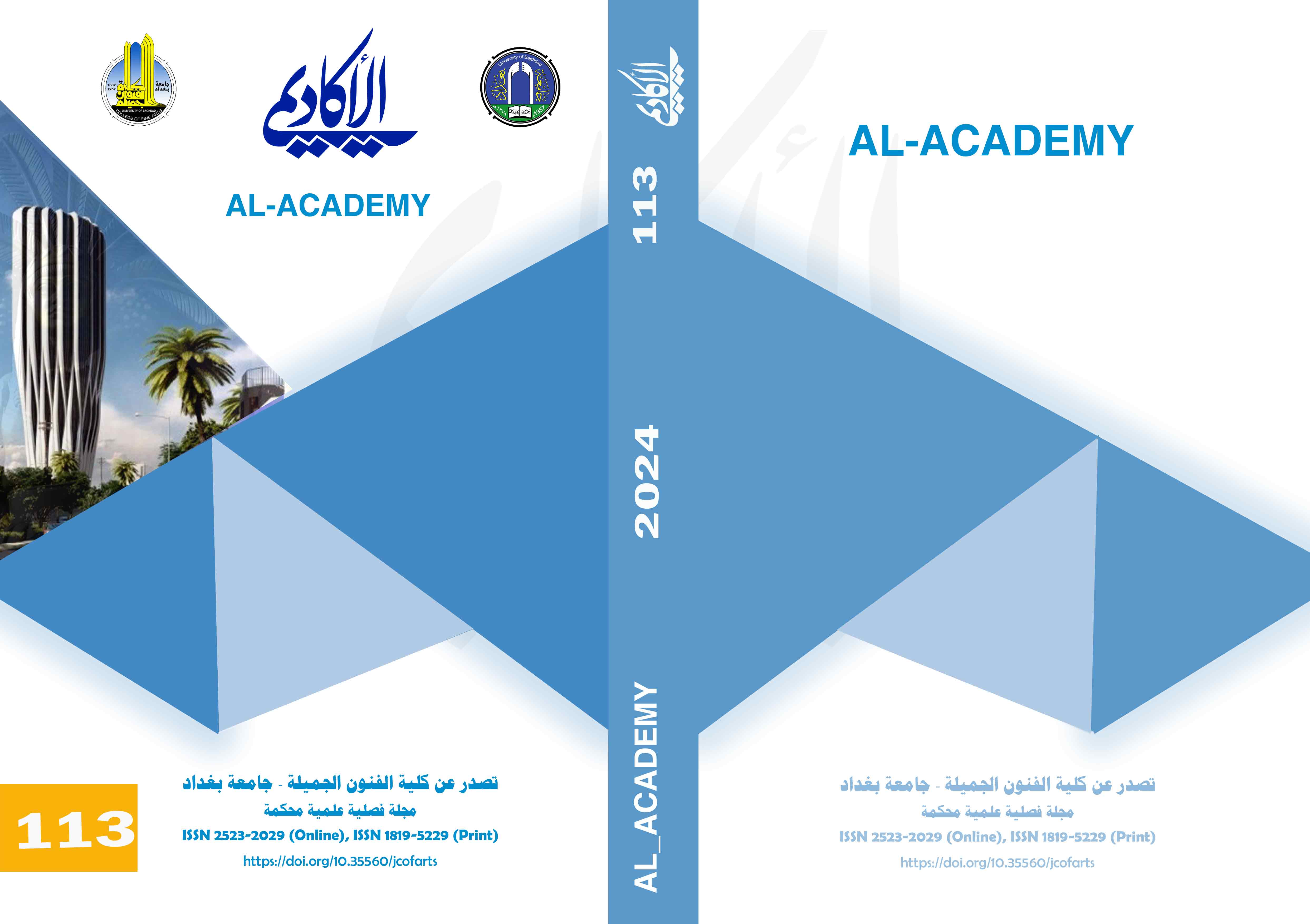The performance of the actor between the sign and the verb in the theatrical show
DOI:
https://doi.org/10.35560/jcofarts1269Keywords:
actor, sign, theatrical actAbstract
The actor is the most important tool and the most effective element for presenting cultural and artistic ideas and images, especially since he leads the group of theatrical elements as a living and effective element that has the ability to build a large group of signs through the means of action that he performs with all the elements within the show system. The actor as a phenomenon works to organize these physical and vocal abilities. And its development to form and organize those transforming and moving relationships with oneself or with the other or with the rest of the other elements of the show to produce a media system of its own that differs from one show to another. And monitoring the research problem, which is represented by the question (to what extent can the performance of the actor build a media system between action and performance?).
As for the theoretical foundation, it consists of two sections: the first section under the title (the sign, its types, classification) and deals with signs in art as an important critical approach that explains the science of signs what are the components of signs, and what are the rules that control them.
The second topic discusses the title (Acts of the Actor and Signs), in which it deals with the form of the actor's performance, which has generated much controversy in the world of theater, as it is the important tool or element that has the highest ability in transformation and media construction. As for (research procedures), it was specialized in analyzing the theatrical performance (Sa'at al-Soudah), which was shown in Baghdad, in the year 2017. After analyzing the sample forms, a set of results and conclusions came out, including:
The actor's internal or external motives work to build a form for his actions that may be simple or compound, which works to produce two types of signs or signals that may be simple or compound, each of which has its own different meanings and interpretations. The research concluded with the sources and the summary in English
References
Al-Kashef, M. (2006). The Body Language of the Actor. Egypt: Al-Ahram Commercial Press.
Ann Oberfield. (1996). The Viewer School. Cairo: Ministry of Culture,.
Aristotle. (2013). The Art of Poetry. (t. b.-R. Badawi, Trans.)
Benkrad, S. (2003). Semiotics: Its Concepts and Applications.
Dior, E. (1998). The Art of Acting, Horizons and Depths, Part 1, TR: Center for Languages and Translation. Cairo: Ministry of Culture.
Elam, K. (1992). The Semiotics of Theater and Drama.
Gillen Wilson. (2000). Psychology of the Performing Arts. Kuwait: The National Council for Culture.
Guero, P. (1994). The Semiotics of Social Communication. Alamat, 76.
kadim, R. (2016). Semantic encoding of the actor’s performance in the Iraqi theater show. Al-Academy((77), 63-74.
Keller, J. (2000). Ferdinand de Saussure (The Origins of Modern Linguistics and the Science of Signs) . (E. E.-D. Ismail, Trans.) Cairo.
Kurzweil, E. (1985). The Age of Structuralism. Baghdad: Arab Horizons House for Press and Publishing.
Oda, r. (2021). The effectiveness of media communication and its problems in the contemporary theatrical presentation. Al-Academy(99), 155-168.
Oda, R. k. (2020). Techniques of Acting Performance in Fantasy Theatrical Show. Al-Academy(95), 5-18.
Peter Bogatyrev, a. o. (1977). Prague Semiotics for Theater (Semiotic Studies). Damascus: Ministry of Culture Publications.
Qassem, S., & Zaid, N. H. (1986). Systems of Signs in Language, Literature and Culture.
Salah, S. (2005). The Actor and the Chameleon, Studies and Lessons in Acting. Cairo: Dar Al Hariri Press.
Saussur, F. d. (1988). General Linguistics.
Downloads
Published
Issue
Section
License
Copyright (c) 2024 Russil kadim Oda, Muhammed Ali Kazem

This work is licensed under a Creative Commons Attribution 4.0 International License.













